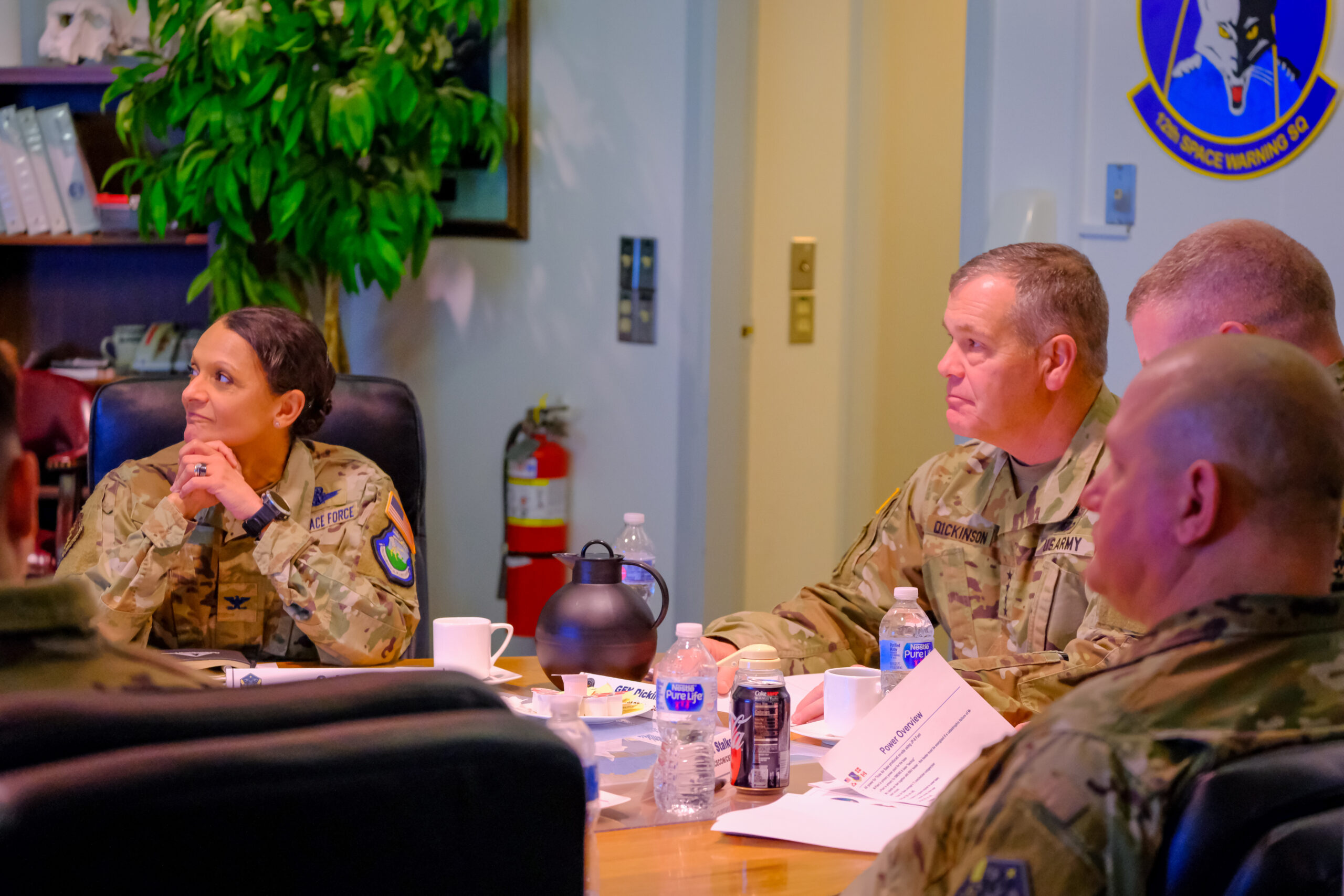U.S. Space Command needs help identifying hostile intent in space

CHANTILLY, Va. — If Russia or any other actor were to intentionally interfere with U.S. satellites, it would be difficult to identify the aggressor, said the top commander of U.S. military space operations.
“The challenge in the space domain is determining intent,” Gen. James Dickinson, commander of U.S. Space Command, said Feb. 23.
Dickinson spoke at the National Security Space Association’s Defense and Intelligence Space Conference via video conference from Colorado Springs.
U.S. Space Command is a military combatant command in charge of operations in the space domain. Dickinson did not comment on reports that Russia might take aim at U.S. or allied satellites in the wake of the Ukraine invasion. A DoD official who briefed reporters Feb. 24 said no U.S. satellites have been attacked so far.
Dickinson warned that the U.S. military and intelligence community need better tools to identify the source of nefarious activity in orbit. A key focus of U.S. Space Command is to protect satellite systems that provide communications, missile warning and GPS navigation.
The destruction of a satellite with a missile strike — as Russia did Nov. 15 in an anti-satellite test — can be attributed right away. But other types of weapons that are deployed from satellites in space would be far more difficult to track and identify with existing sensors. Defense officials have warned, for example, about Russian spacecraft maneuvering toward an American satellite.
“If a competitor satellite is near an allied satellite or an asset, it is extremely important that we understand not just distance and orbital characteristics, but why it is there? What exactly is its objective?” Dickinson said.
“Many Americans understand the significance of the crisis in Ukraine. Fewer fully understand that sometimes reckless and potentially dangerous activities also are occurring in the space domain,” he said.
If a U.S. satellite were attacked, U.S. Space Command would be responsible to recommend ways to respond. “Knowing what is happening is insufficient, knowing why it’s happening better informs the options we’re able to present to the Secretary [of Defense] and the President,” said Dickinson.
One of Space Command’s top priorities is to acquire better tools to “understand, characterize and describe what’s happening in the space domain … and ultimately, it’s for me to understand and provide recommendations to the national level of leadership. So that’s probably one of the biggest problems or issues I’m working through right now.”
U.S. Space Command operates a vast network of ground-based and space-based surveillance sensors that monitor outer space. But the data collected by these sensors often is not enough to answer important questions and provide context, said Dickinson. “While the system itself is an important part of the overall picture, it is useless without solid intelligence.”
Dickinson said U.S. Space Command is strengthening partnerships with allied countries and with the private sector to share intelligence about the space domain.
“Given the challenges that we see from both Russia and China, we need all of our allies and partners and we’re really looking to expand beyond the Five Eye partners,” he said. The Five Eyes include Australia, Canada, New Zealand, the United Kingdom and the United States. Space Command plans to add liaison officers from France, Germany, Japan, the Republic of Korea. Italy and Spain.
Space Command also gets intelligence from a group of commercial satellite operators known as the “commercial integration cell.” Members include Intelsat, SES Government Solutions, Inmarsat, Eutelsat, Maxar, Viasat, XTAR, Iridium Communications and Hughes Network Systems.
Related
ncG1vNJzZmiroJawprrEsKpnm5%2BifLZ50maqqZmTmnqku8ymmKecXaOyprDSZp%2BepKBitqWxza2gn7GZo7RutM6sq6KklWK2r8DEp6tmoZ5iwLGtwp5m